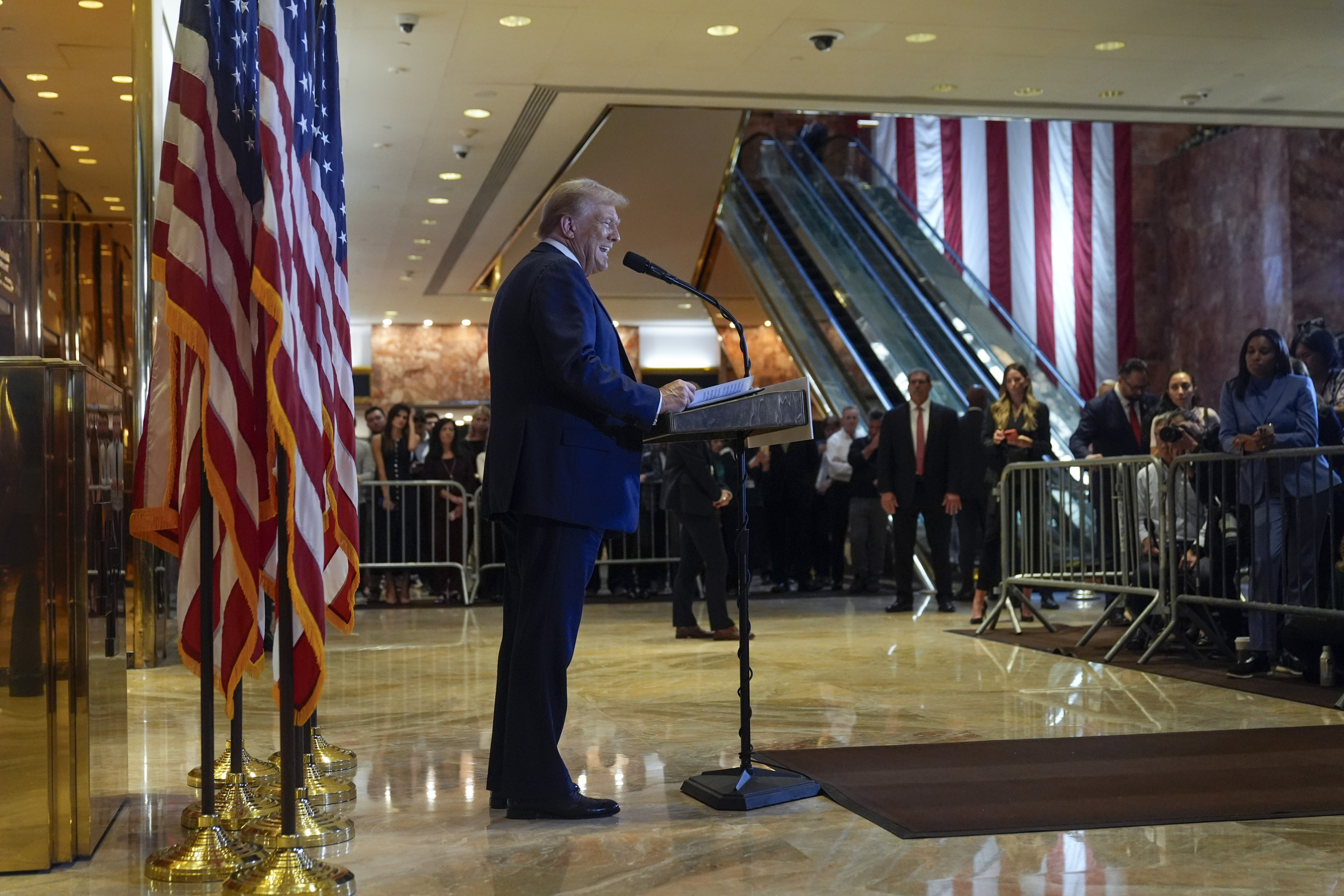Politics
As California water agency investigates top manager, some worry progress could be stymied
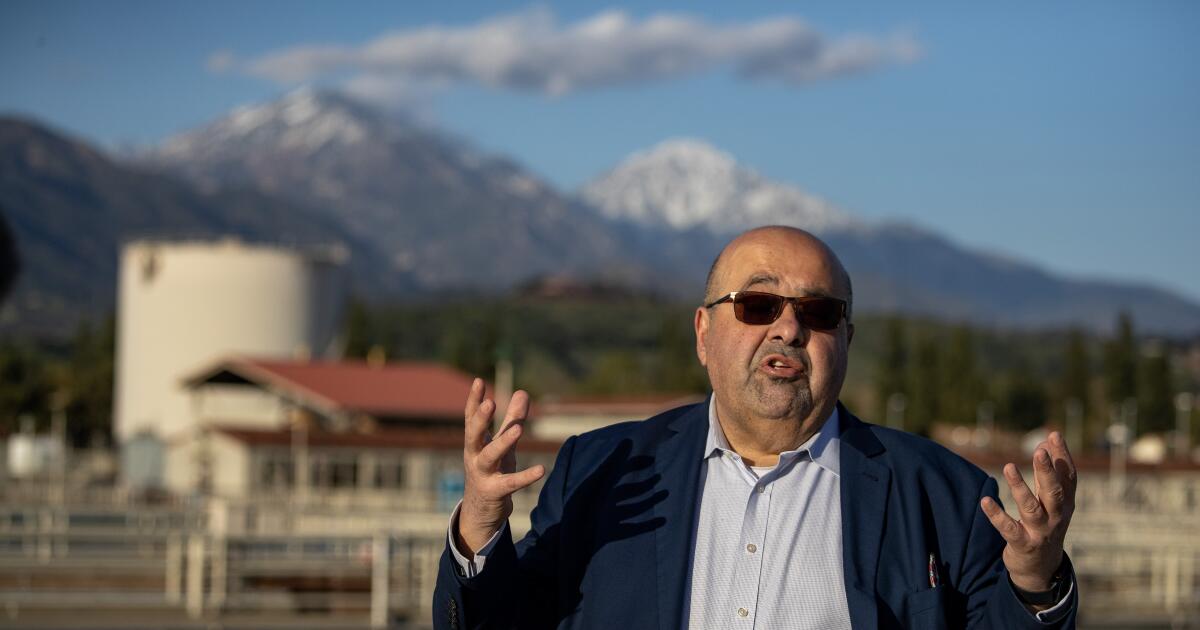
In the three years that Adel Hagekhalil has led California’s largest urban water supplier, the general manager has sought to focus on adaptation to climate change — in part by reducing reliance on water supplies from distant sources and investing in local water supplies.
His efforts to help shift priorities at the Metropolitan Water District of Southern California, which has traditionally focused largely on delivering imported water to the region, have won praise among environmental advocates who hope to reduce dependence on supplies from the Colorado River and Northern California.
However, now that Hagekhalil is under investigation for harassment allegations and has been placed on leave by the MWD board, some of his supporters say they’re concerned that his sidelining might interfere with the policies he has helped advance.
“I would hope this doesn’t mean that we undo the progress that’s been made since Adel came in,” said Conner Everts, executive director of the Southern California Watershed Alliance, who has supported Hagekhalil’s policies.
Aggressive and impactful reporting on climate change, the environment, health and science.
The accusations against Hagekhalil surfaced Thursday while he was traveling in Singapore for a water conference.
Chief Financial Officer Katano Kasaine made the allegations in a confidential letter to the board, which was leaked to the media. She said Hagekhalil has harassed, demeaned and sidelined her and created a hostile work environment.
Hagekhalil denied the accusations, saying he has always treated the staff with respect and professionalism, and that the claims amount to “disagreements on management decisions.”
The MWD board voted to place Hagekhalil on administrative leave for 90 days while Kasaine’s complaint and other allegations are investigated. In his place, the board temporarily appointed assistant general manager Deven Upadhyay, who has been at the agency for 29 years, as interim general manager.
Everts has for more than three decades been advocating for Southern California to reduce reliance on imported water supplies by boosting local supplies. He said he has been pleased to see Hagekhalil and MWD moving forward with plans for the country’s largest wastewater recycling facility in Carson, and working to develop a plan for adapting to climate change.
Everts said he hopes that whatever results emerge from the investigations, the agency doesn’t revert to an outmoded focus on imported water that he believes some “old guard” leaders of MWD still favor.
Everts, like many others who spoke at Thursday’s board meeting, said the accusations demand a fair and impartial investigation.
“Hopefully, Adel comes back and continues to lead in this direction. And if not, whoever would step in would do that,” Everts said. “Does the culture change of the agency continue to progress? That’s my question.”
MWD is the nation’s largest wholesale supplier of drinking water, serving cities and agencies that supply 19 million people across Southern California.
MWD Board Chair Adán Ortega Jr. said that while the board made “difficult decisions” regarding the allegations against Hagekhalil, “we maintain our commitment to the policies and direction of this organization.”
Ortega said he doesn’t expect any change in the district’s “current policy course.”
“Our task at hand is tackling climate change,” Ortega said in an interview with The Times. “Anybody that would challenge that is up against a pretty embedded policy framework for tackling climate change.”
Ortega was involved in selecting Hagekhalil, who previously worked for the city of Los Angeles and who was hired after a bitter struggle among board members in 2021. Ortega said his priorities as board chair have been the same priorities that Hagkhalil has been pursuing.
As for the accusations against Hagekhalil, Ortega said he was upset that someone leaked the confidential letter.
“I believe that whoever leaked it was trying to box in the board. But we’re not going to let them, and I don’t think it worked,” Ortega said.
He said all the initiatives that Hagekhalil was working on will continue under Upadhyay while the matters are investigated.
“The board drives the agenda,” he said. “I think the board has been united on things that Adel and I have both shared.”
Hagekhalil has led the agency at a time of major initiatives, including negotiations aimed at addressing water shortages on the Colorado River, plans for building the water recycling plant in Carson, and the MWD board’s consideration of Gov. Gavin Newsom’s plan to build a $20-billion water tunnel in the Sacramento-San Joaquin River Delta.
Some of Hagekhalil’s supporters questioned why the matter was brought to the board while he was traveling, and suggested the public airing of grievances appeared to be aimed at pushing aside a leading advocate for transforming the district’s focus.
But Ortega said any speculation that placing Hagekhalil on leave might derail the MWD’s current policy agenda is unfounded.
“The board is fully organized in support of that agenda,” Ortega said. “So I don’t feel any nervousness or doubt about our continued policy direction.”
“It’s a mistake to think that the fate of our policy agenda rests on one person,” he added. “Nothing is changing in terms of the board’s organization or the items that we’re considering in future months, or the composition of the committees. All of that is intact. And so nothing changes.”
Still, some environmental advocates have said they’re concerned about a potential link between the surfacing of allegations against Hagekhalil and efforts by some within the agency to push for the proposed Delta Conveyance Project, a 45-mile tunnel that would create a second route to draw water from the Sacramento River into the aqueducts of the State Water Project. They pointed out that Kasaine currently serves as treasurer of the Delta Conveyance Design and Construction Authority, the entity that was created to finance the tunnel project.
“I think it is a calculated ambush that is designed to get the tunnel approved, over the objections of other members of the Metropolitan board,” said Patricia Schifferle, director of Pacific Advocates, an environmental consulting firm.
During an MWD committee meeting on Monday, supporters and opponents of the proposed tunnel debated the costs and benefits of the project.
Karla Nemeth, director of the State Department of Water Resources, told board members that the project is essential to improving the reliability of water supplies in the face of climate change, sea-level rise and a major earthquake.
Other supporters made similar arguments, while opponents argued that building the tunnel would harm the delta’s deteriorating ecosystem and would be more expensive than other water-supply alternatives.
The costs would be paid for by urban and agricultural water districts that decide to participate. The state recently released a cost-benefit analysis that is intended to provide information for local water agencies to consider.
The MWD would receive a large share of the water, and the board’s eventual decision on whether to participate is expected to be pivotal in determining whether the state’s plan goes forward.
The MWD board in 2020 agreed to contribute $160.8 million toward planning and pre-construction costs. District officials say the board could consider whether to provide additional funding for planning and pre-construction costs at the end of this year, and it will likely be several years before there is a decision on long-term financial participation.
When the state’s cost-benefit analysis was released last month, Hagekhalil said: “The questions are, how can this project be implemented, what kind of assurances can we have in the resilience it provides to the Delta and our water supply future, and at what price?”
Leaders of several environmental groups said they were disappointed to see Hagekhalil placed on administrative leave before the accusations against him have been investigated.
“It is critically important and appropriate for MWD to take these allegations seriously and we applaud the agency’s decision to investigate the claims made, so that the board can have an accurate understanding of what has been happening among the organization’s senior leadership,” said Bruce Reznik, executive director of the group LA Waterkeeper. “That said, the public needs more information to ensure the complete independence of this review.”
He said any action against Hagekhalil should have come after an independent investigation.
Reznik called Hagekhalil a “visionary, inclusive and transparent leader” who is helping the agency reform its approach to adapt to the effects of climate change.
“He has been vocal about his vision and plans to transform the agency,” Reznik said. “That focus must continue at MWD.”

Politics
Which Battleground State Voters Could Sway the Election?

It’s no secret that the political sentiments of Americans follow lines of race and ethnicity, education and age. But what makes presidential elections so competitive is how these demographic groups often balance each other out.
Voters in key states in 2020
In 2024, this delicate equilibrium is key to understanding the seven battleground states where, according to the polls, the presidential race is closest. Last election, several of these states were decided by fewer than 40,000 votes. Since then, together they’ve added about 1.3 million potential voters, and the smallest shifts in sentiment or turnout among certain groups could be enough to alter the outcome of this election.
To better understand the demographic forces at play in the battlegrounds, The New York Times conducted a granular review of the 2020 contest and compared precinct-level results with census data to estimate who cast ballots and how they voted. We examined race and ethnicity, age, education and geography to identify trends and key groups in each state. (Gender is another growing factor in partisanship but was not part of this analysis.)
2020 result: Biden won by 10,000 votes Key groups: Latino voters, young voters
The 2020 Electorate
3.4 million people voted
1.7 million people did not vote
What to watch President Biden’s winning coalition relied heavily on Latino voters, who made up nearly a quarter of those who voted in 2020, a figure that will likely rise in this election. But while Latino voters in the state have typically favored Democrats, no group is a monolith.
Experts say Latinos have weaker party attachment than other nonwhite groups and could be persuaded to change their votes. Moreover, a significant share of this group is made up of U.S.-born, young Latinos who will vote for the first time, and their sentiment is less predictable. Recent surveys have shown former President Donald J. Trump making inroads with young people and voters of color.
Mr. Trump’s biggest support in 2020 came from white voters aged 35 and older. This group accounted for half of the ballots cast, due in part to the outsize number of white retirees in the state.
For Democrats, there are potentially more votes to gain. In 2020, there were more ballots cast for the Democratic Senate candidate than for Mr. Biden. “Those voters who voted for Mark Kelly but decided not to vote for Biden or Trump could have decided the outcome of the race,” said Samara Klara, a political science professor at the University of Arizona.
2020 result: Biden won by 12,000 votes
Key groups: Black voters, white voters with a college degree
The 2020 Electorate
5 million people voted
2.5 million people did not vote
What to watch Democrats in Georgia have long been guided by the “30/30 rule,” a term made popular by the University of Georgia political scientist Charles S. Bullock III. It says that in order for Democrats to win, Black voters must make up 30 percent of all voters and at least 30 percent of white voters must vote Democratic.
Black voters, who cast nearly a third of the ballots in 2020, overwhelmingly favored Mr. Biden — by almost 90 percent. But that reliable base of support appeared to be slipping earlier this year, and it’s a group that experts say Vice President Kamala Harris must energize and excite. About 850,000 Black Georgia residents did not vote in 2020.
“If you have anemic turnout among Black voters, that will spell doom for the Democratic ticket,” said Andra Gillespie, a political science professor at Emory University.
Georgia voters, by race and education
Both parties will also be looking to appeal to a growing share of white voters with a bachelor’s degree, a group whose votes were split nearly evenly between Mr. Biden and Mr. Trump in 2020.
2020 result: Biden won by 154,000 votes
Key groups: Suburban voters, Black voters, Arab American voters
The 2020 Electorate 5.5 million people voted
2 million people did not vote
What to watch In 2020, Mr. Biden won Michigan handily — at least by the standards of a battleground state.
But Mr. Trump performed very well with white residents in suburban and rural communities, who made up nearly two-thirds of the voters in the 2020 election.
Michigan voters by geography
Democrats’ strong performance among nonwhite voters and in the suburbs of Detroit helped erase Republicans’ advantage in the suburbs around smaller cities in 2020. But even though Black voters overwhelmingly supported Mr. Biden, they were a relatively small group — just 14 percent of those who cast ballots. And experts say that Black support for Democrats could be waning in Michigan.
“There’s definitely an attitude that they aren’t represented, in comparison to their population and their outsize role in the Democratic party,” said Matt Grossmann, a political science professor at Michigan State University. He pointed to Detroit, a majority-Black city that does not have any Black representation in Congress. “The feeling is, how much attention are you paying to us? And how much are you taking us for granted?”
Disillusionment among the estimated 3 percent of Michigan voters who are Muslim and Arab American — a traditionally strong Democratic constituency — could also make a difference this year. Many of these voters have voiced their anger and frustration with the Biden administration’s support for Israel in the war in Gaza, and some have said they may choose to sit out this election or cast ballots in favor of a third-party candidate.
2020 result: Biden won by 34,000 votes
Key groups: Nonwhite voters, voters without a college degree
The 2020 Electorate
1.4 million people voted
783,000 people did not vote
What to watch Nationally, education is a major political fault line, with college-educated voters far more likely to support the Democratic Party and less-educated voters favoring Republicans. But Nevada is the major exception to this rule: Democrats have won there in the past four elections, despite the state having a relatively low share of college-educated voters.
That’s because educational attainment divides mostly white voters, and many of Nevada’s less-educated voters are not white. Mr. Biden won half of the vote among voters without a four-year degree in Nevada, atypical for the nation as a whole.
Nevada voters by race and education
Over the last several years, inflation has hurt working-class voters, and concerns about the economy could make it easier for the Trump campaign to eat into the Democratic advantage with blue-collar voters of color.
“Nevada is a little bit of a different animal,” said David Damore, a political science professor at the University of Nevada, Las Vegas, pointing to the state’s low voter turnout, high diversity and more transient population. “This all means that there are a lot of potential untapped voters that could be mobilized.”
2020 result: Trump won by 74,000 votes
Key groups: Rural voters, suburban voters
The 2020 Electorate 5.5 million people voted
2.3 million people did not vote
What to watch In 2020, North Carolina gave Mr. Trump the narrowest lead of any state he won. Voters in rural areas, who accounted for nearly a fifth of the total, helped deliver Mr. Trump his victory.
North Carolina voters by geography
But North Carolina also has many small cities with a strong partisan divide between city-dwellers, who favor Democrats, and suburbanites, who favor Republicans.
For Democrats to flip the state, they must lose fewer votes in rural areas and increase voter turnout in smaller cities, like Greensboro and Asheville, said Chris Cooper, a political science professor at Western Carolina University.
“If we see a marginal movement away from Trump in rural areas, that’s really important,” he said. “The map will still show these places as red, but those differences can be the difference between winning and losing.”
2020 result: Biden won by 82,000 votes Key groups: Voters without a four-year college degree, suburban voters
The 2020 Electorate
6.9 million people voted
3 million people did not vote
What to watch As it does in other states, education plays a big role in the partisan divide in Pennsylvania. White voters without a bachelor’s degree made up nearly half the total, and they favored Mr. Trump three to one in 2020. Even so, that wasn’t enough for him to overcome the coalition of white voters with a college degree and voters of color who delivered Mr. Biden a victory.
The other big factor is geography.
Pennsylvania voters by geography
Mr. Trump dominated the state’s rural areas and small towns, as well as the Pittsburgh suburbs. But Mr. Biden had a strong showing in Pennsylvania’s cities and in the Philadelphia suburbs, areas that accounted for more than 40 percent of the votes in 2020.
2020 result: Biden won by 21,000 votes
Key groups: Rural voters, young voters
The 2020 Electorate
3.3 million people voted
1.1 million people did not vote
Wisconsin saw a similar geographic divide among voters. The bulk of Mr. Trump’s support came from the state’s more than 1,000 small towns and the outer suburbs of Milwaukee.
But the fastest-growing part of the state is an area that increasingly favors Democrats: the suburbs of Madison, home to the main campus of the University of Wisconsin.
Wisconsin voters by geography
In 2020, turnout in Dane County, which includes Madison, was 89 percent.
“It is among the highest turnout counties in the country,” said Charles Franklin, the director of the Marquette Law School Poll. “The question for Democrats here is, is it even possible to squeeze more votes out of Dane County?”
Politics
North Carolina removes 747,000 from voter rolls
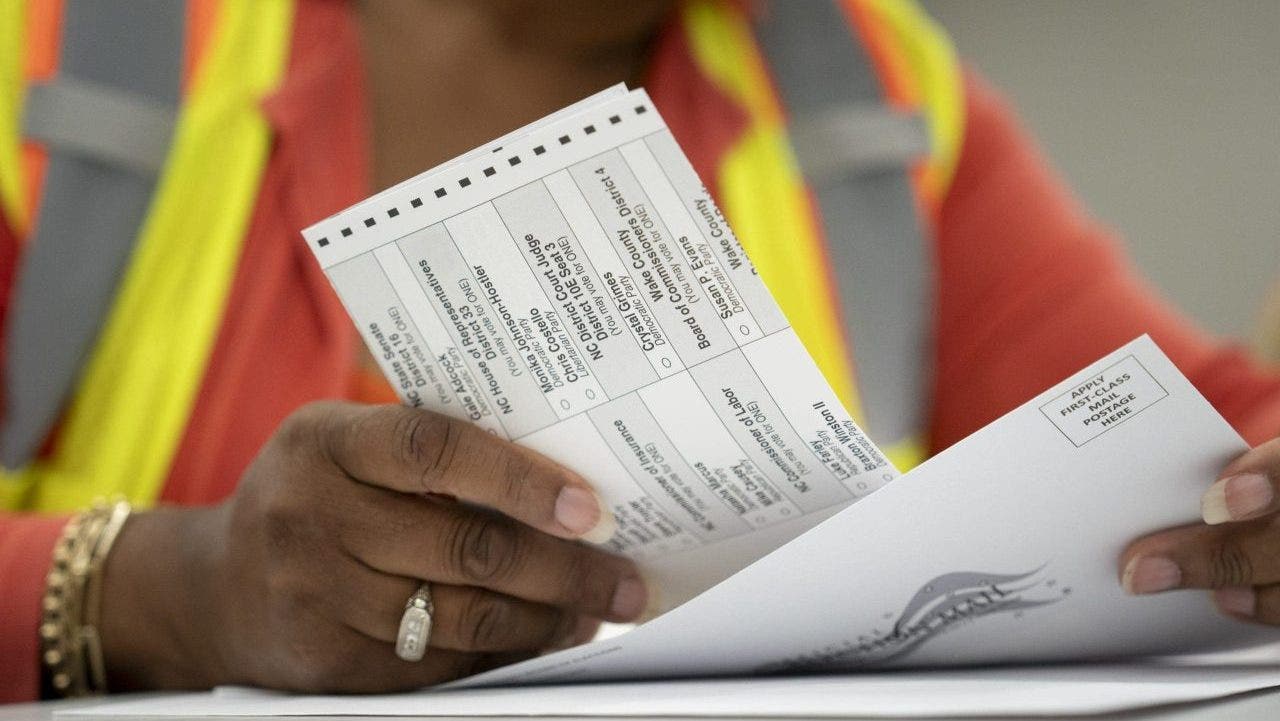
North Carolina has removed over 700,000 individuals from its registered voter list, officials say.
The State Board of Elections announced Thursday that 747,000 people have been removed from voter rolls in the last 20 months due to ineligibility.
“The county boards follow careful policies to ensure that only ineligible records are removed, not those of eligible voters,” the Board of Elections said in a press release.
NORTH CAROLINA GOP FOCUSING ON ‘HAND-TO-HAND POLITICAL COMBAT’ TO RAMP UP GROUND GAME IN BATTLEGROUND STATE
Absentee ballots are prepared to be mailed at the Wake County Board of Elections in Raleigh, North Carolina. (Allison Joyce/Getty Images)
“Meanwhile, newly eligible voters are constantly being added to the registration rolls in our growing state,” the board added. “Currently, North Carolina has nearly 7.7 million registered voters.”
A common reason for removal from voter rolls was moving residences — either within the state without notifying election officials or to another state altogether.
Other removed individuals failed to vote in the last two federal elections and did not respond to follow-up notifications from the government seeking to confirm their registration.
NC RALLYGOERS ‘PRAYING’ THAT TRUMP WINS, SLAM DEM RHETORIC CALLING HIM A ‘THREAT’ AFTER ASSASSINATION ATTEMPTS
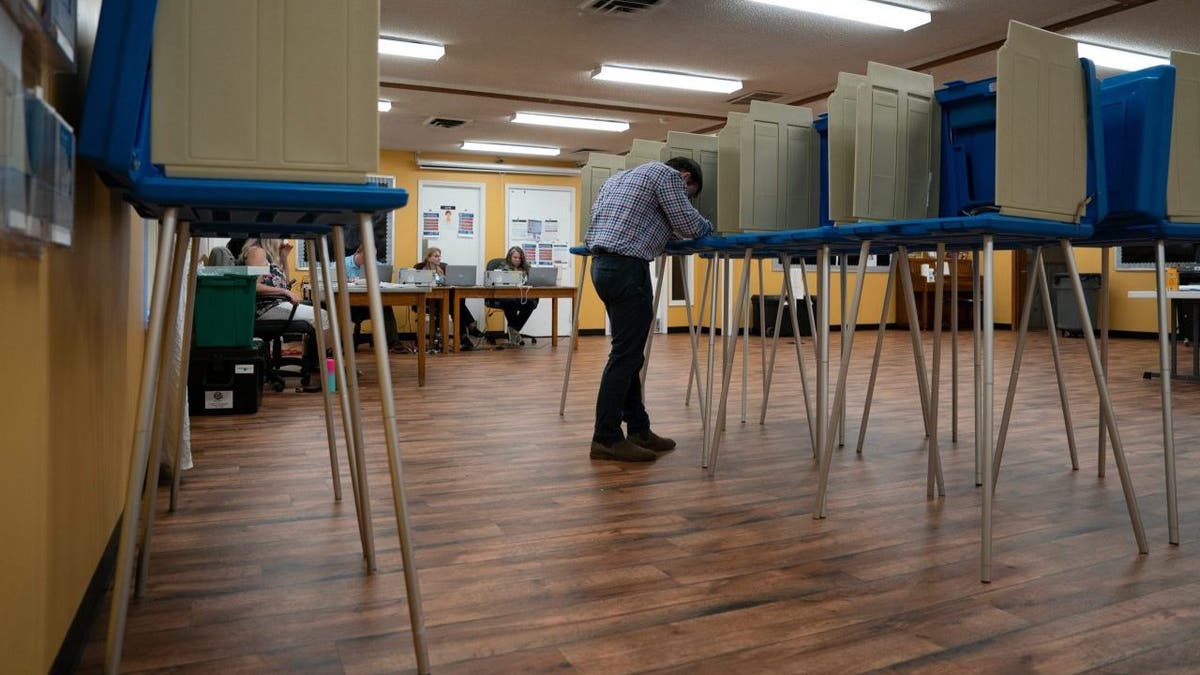
A voter casts their ballot at a polling station inside the Greenleaf Christian Church in Goldsboro, North Carolina. (Allison Joyce/Bloomberg via Getty Images)
Death, felony conviction, requests to be removed, and lack of U.S. citizenship were also listed as reasons for dropping individuals from voter rolls.
The Marist Poll released Thursday finds that Harris and Trump are tied at 49% among likely voters in North Carolina who were asked which candidate they were leaning toward. Of those polled who have made up their minds, 91% said they strongly support their choice.
North Carolina last voted for a Democratic president in 2008, when then-Sen. Barack Obama won the state by 0.3 points, or 14,177 votes.
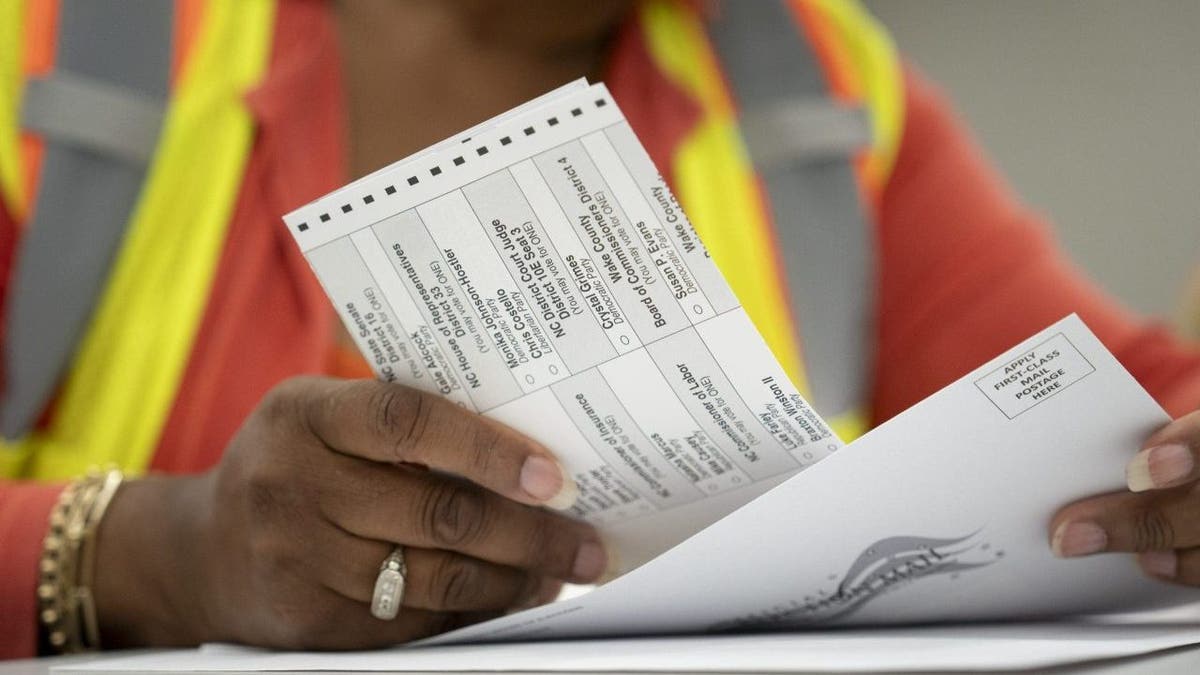
North Carolina sent out absentee ballots to military and overseas citizens ahead of the September 20 deadline. Other absentee ballots were sent by September 24 to voters who requested ballots by mail. Early voting begins October 17. (Allison Joyce/Getty Images)
Trump pulled out a convincing 3.7 point win in 2016, but that margin shrank to 1.3 points against President Biden in 2020.
North Carolina began absentee voting for registered voters on Tuesday, having begun sending absentee ballots to military and overseas voters on Friday. Applicants do not need to provide an excuse to receive a ballot.
The state must receive a ballot application by Oct. 29, and that ballot must be delivered to county officials by Nov. 5.
Fox News Digital’s Chris Pandolfo, Rémy Numa, Anders Hagstrom contributed to this report.
Politics
Track the money for Prop 33: Contributions for and against California's ballot measure on rent control

Propositon 33 would let cities and counties enact rent control by repealing the Costa-Hawkins Rental Housing Act. Similar statewide rent control initiatives failed in 2020 and 2018.
Supporters say repealing the ban on localities capping rent on vacant units, single-family homes and apartments built more recently will give local governments tools to ease the affordability crisis for their residents.
Opponents counter it will cause developers to build less, thus worsening California’s housing affordability. Real estate interests are opposing the measure along with an affordable housing bond measure, Proposition 5. One committee has been formed to oppose both propositions — its fundraising is included in The Times’ tracking of campaign spending for both propositions.
Overall fundraising
Cumulative contributions
Biggest supporters
The AIDS Healthcare Foundation, a Los Angeles nonprofit that was behind the previous rent-control attempts has contributed more than $36 million in support. Los Angeles City Councilmember Kevin de León has formed a committee in support of this measure as well as Propositions 3 and 32. His $600,000 contribution is included in all three. Other supporters include labor and tenant organizations.
Biggest opposition
The opposition is backed by real estate investors, realtors and property managers including investor Michael K. Hayde with $1.9 million. The California Apartment Assn. has contributed $34.4 million in opposition. One of the committees opposing this measure, the Homeownership for Families committee, is also opposing Proposition 5, a measure that would make it easier for local governments to approve bonds and tax measures that fund affordable housing and public infrastructure. Contributions are shown in both. It is sponsored by the California Assn. of Realtors, which has contributed $22 million.
Times housing reporter Andrew Khouri contributed to this report.
-

 News1 week ago
News1 week agoSecret Service Told Trump It Needs to Bolster Security if He Keeps Golfing
-

 Business1 week ago
Business1 week agoU.S. Steel C.E.O. Says Nippon Deal Will Strengthen National Security
-
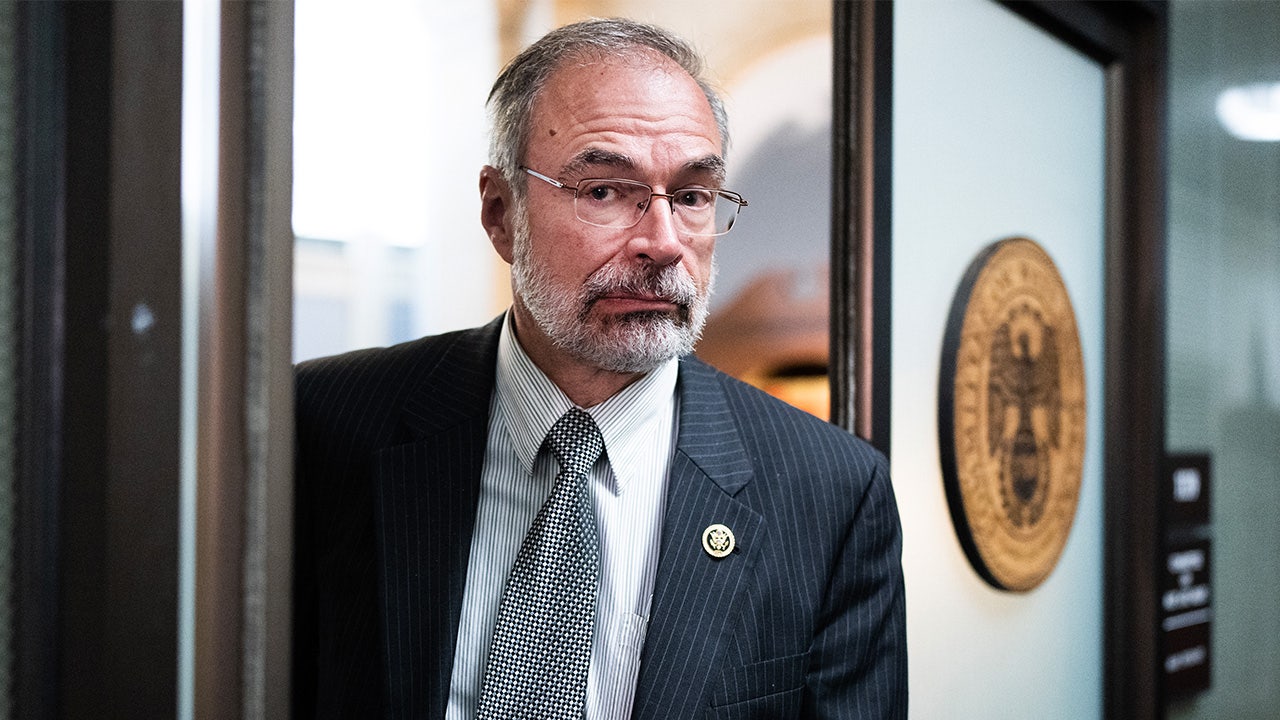
 Politics1 week ago
Politics1 week agoNew House Freedom Caucus chair reveals GOP rebel group's next 'big fight'
-

 News1 week ago
News1 week agoToplines: September 2024 Inquirer/Times/Siena Poll of Pennsylvania Registered Voters
-

 News1 week ago
News1 week agoDisney trips meant for homeless NYC students went to school employees' families
-

 Politics1 week ago
Politics1 week agoBiden admin moves to reinstate Trump-era rule, delist gray wolves from endangered species list
-

 Politics1 week ago
Politics1 week agoDem lawmakers push bill to restore funding to UN agency with alleged ties to Hamas: 'So necessary'
-

 World1 week ago
World1 week agoWhat’s South Africa’s new school language law and why is it controversial?












